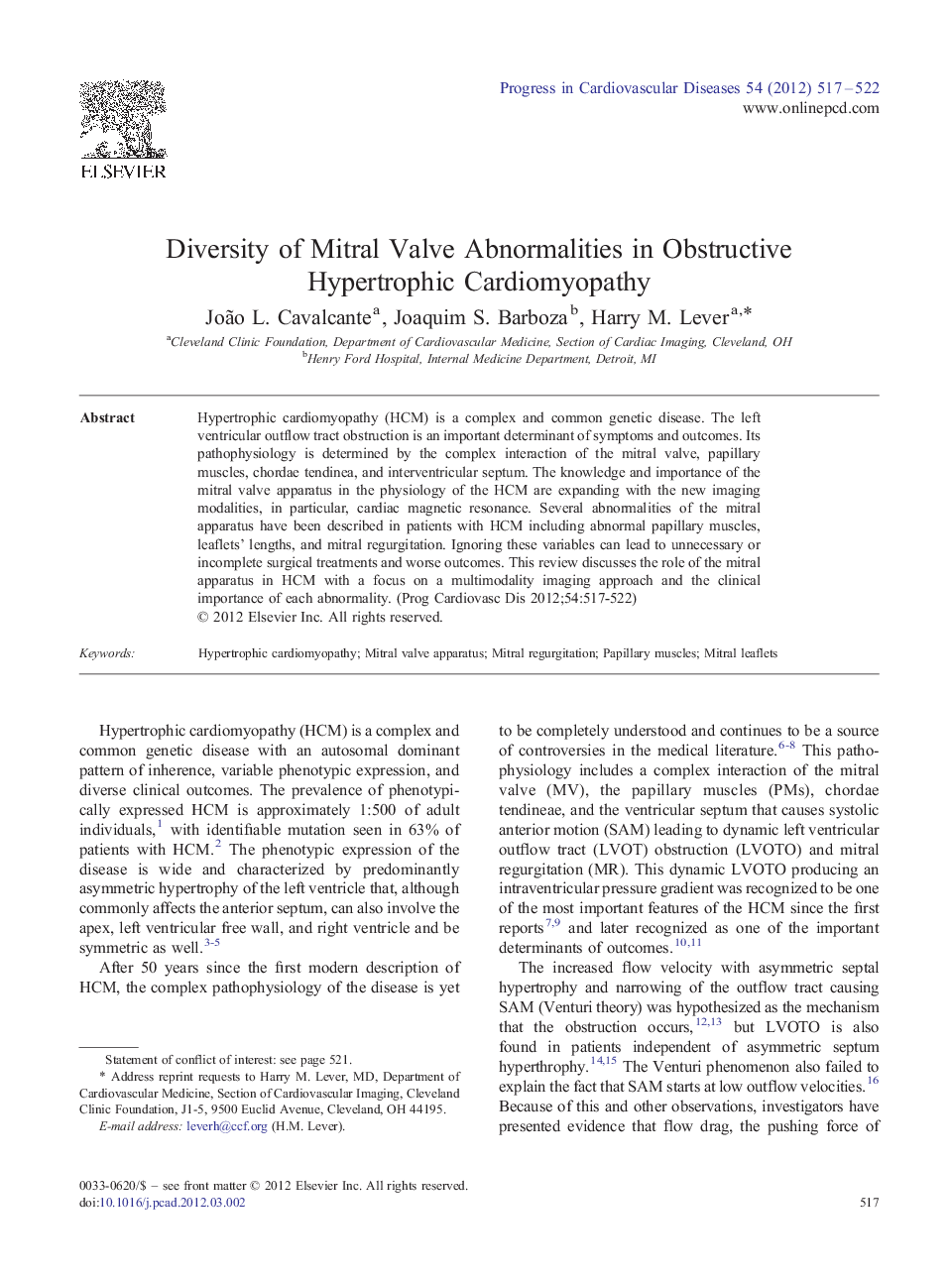| Article ID | Journal | Published Year | Pages | File Type |
|---|---|---|---|---|
| 3006864 | Progress in Cardiovascular Diseases | 2012 | 6 Pages |
Hypertrophic cardiomyopathy (HCM) is a complex and common genetic disease. The left ventricular outflow tract obstruction is an important determinant of symptoms and outcomes. Its pathophysiology is determined by the complex interaction of the mitral valve, papillary muscles, chordae tendinea, and interventricular septum. The knowledge and importance of the mitral valve apparatus in the physiology of the HCM are expanding with the new imaging modalities, in particular, cardiac magnetic resonance. Several abnormalities of the mitral apparatus have been described in patients with HCM including abnormal papillary muscles, leaflets' lengths, and mitral regurgitation. Ignoring these variables can lead to unnecessary or incomplete surgical treatments and worse outcomes. This review discusses the role of the mitral apparatus in HCM with a focus on a multimodality imaging approach and the clinical importance of each abnormality.
